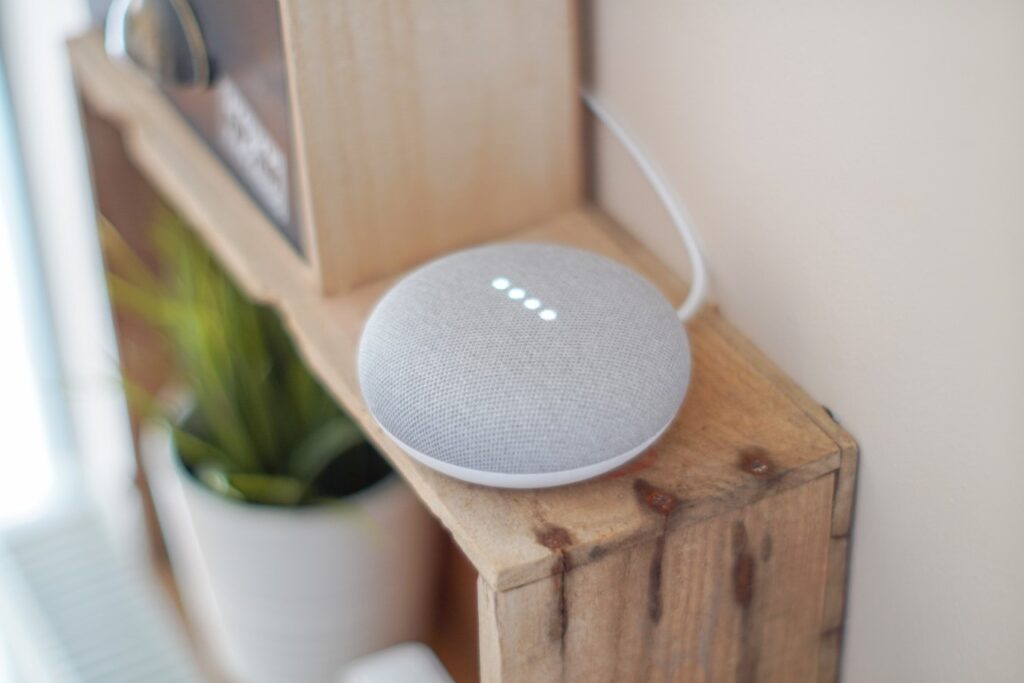Voice search is the new king of search. It’s already shaping how we consume information and spend our time online, but can it also be used to our advantage? Yes! Voice assistants such as Alexa and Siri can process human language in a way that standard text-based bots simply cannot. As a result, you can use this information to improve the performance of your website or business–and even get more clicks from visitors who might otherwise leave without buying anything from you. In this article, we’ll explore how optimizing website content for voice search works and what steps need to be taken before taking on this task yourself.

Voice assistants
Voice assistants are here to stay, and they’re already changing our lifestyles. Voice search is growing rapidly. In 2018, Google led all internet companies in global revenue generated by its voice assistant products (including Google Assistant, YouTube, and Pixel phones). Apple’s Siri has become a staple feature of Apple devices since it was introduced in 2011; last year alone saw an increase of more than 40 percent in usage for this platform globally. Amazon’s Alexa has also seen rapid growth since its launch in 2014 as well as being integrated into other companies’ hardware like Samsung TVs or Nest thermostats; these integrations aren’t just limited to home appliances either–in some cases they can be found on medical equipment used by hospitals around the world!
Relationship between the query and the response:
The relationship between the query and response is a game of two halves – the query and the response. The user speaks out loud in their native language, giving voice to what they want or need. The search engine then reads this speech, converts it into text, and returns relevant results based on its understanding of that question.
- The query is what you’re searching for; “what are my friends doing tonight?” or “find me a good restaurant near my office”. You can think of it as your spoken question or request for help finding something (e.g., dinner reservations).
- The response will give you an answer to your question: where can I eat dinner tonight?
How can I use voice search effectively?
The secret to succeeding on voice search is to optimise for the words and phrases that users use when they search. In this context, optimising refers to making the appropriate word and phrase choices to maximise the effectiveness of your advertising. It’s similar to how you optimize text-based search results by choosing the best relevant keywords and phrases–only with voice search it’s even more important because there are so many more factors at play:
- Context (e.g., “how do I do this?”)
- Tone (e.g., serious vs casual)
- Personality (e.g., confident vs nervous)

What’s the best way to organize content on your website?
- Use a content hierarchy. If you want to optimize for voice search, ensure that your website is organized into logical sections and that each section is clearly labeled with headings and subheadings.
- Write for humans, not search engines. You should aim to write content that users will want to read (and not just scan), rather than trying to trick the algorithm into ranking higher by using keywords or phrases related solely to keyword relevance( which could make your site seem spammy).
- Keywords in everything! Whether it’s titles or meta descriptions, use keywords wherever possible so it’s easier for people who are looking for information on this topic/product/service, etc. to find what they’re looking for quickly.”
How do you optimize local listings for voice search?
With voice search, you want to optimize your listing for local search. You can do this by adding your business name and address to your listing, using the same keywords that you would use for a regular search.
When it comes to optimizing for local results, two things will make all the difference:
- The title of your page should be descriptive enough so users know what they’re getting into when they click on it (i.e., “Best Thai Food in Seattle”). This will help drive more clicks from people who have searched in advance and know exactly what they’re looking for–and fewer people clicking on random pages they don’t care about anyway!
- Your description should include information about what makes your business unique, such as the quality of your food or service. This will help you stand out from other businesses that offer similar products and services.
Is it time to alter your Google Shopping advertisements ?
Although Google Shopping ads are a great method to enhance your visibility and sales, its vital to remember that not every business should use them. Using this channel can be a waste of money and resources if your goods or services are not pertinent to the voice search audience( that is, if people would not ask queries about them).
To optimize your product listings :
- Make sure all of your product titles are optimised for Google Assistant. For example, “How do I make my hair look fuller?” isn’t going to get asked very often compared with things like “What’s the best way to style curly hair?” or “How do I choose between straighteners?”
- Update any images on your website so they look more clear and more recent (or at least up-to-date). This is especially important if there has been a significant change in styling trends over time–you don’t want visitors clicking through thinking it still looks like the same thing from five years ago!
Optimizing the website content for voice search
If you want your website to be more successful in the future, you must optimise the content for voice search. As more people turn to their smartphones for information about goods and services, voice search will become more prevalent in our daily lives. Discovering the keywords and phrases people use to search online is the first step in voice search website optimization.

Using Google’s Keyword Planner tool, users can enter a word or phrase in the search field to see how many impressions are generated each month across different devices( mobile phones and tablets ), which is one approach to do this.By looking at these numbers over time–and comparing them against other keywords–you can get a sense of how popular that term may be among consumers who are searching on mobile devices right now.
Another way involves analyzing data from Google Autocomplete results pages; here we’ll examine how well certain terms perform relative to others when typed into Google’s autocomplete function (by pressing enter after typing “the”). For example, You might notice that people tend not to call themselves “web designers” but instead opt for terms like “designer” or “web developer.”
Conclusion
The inquiry and the answer are the two halves of voice search. The secret to succeeding on voice search is to optimise for the words and phrases that customers actually use when they search. What is the ideal method for structuring the content on your website? How can local listings be made voice search-friendly? Is it time to alter your Google Shopping advertisements? These are only a few of the issues we have cover in this post, which will provide you an advantage over your rivals by enabling you to comprehend how voice assistants operate and how they interact with websites.

